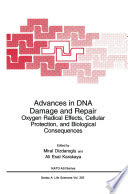Is free radical scavenging action of ACE inhibitors related to their protective effect on reperfusion arrhythmias in rats?
The antiarrhythmic effects of captopril, a sulphydryl-containing angiotensin convert ing enzyme (ACE) inhibitor, were compared with those of the non-sulphydryl-containing ACE inhibitor l i sinopril and the sulphydryl-conta ining agent glutathione in an in vivo rat model of coronary artery l igation. To produce arrhythmia, the left main coronary artery was occluded for 7 min, followed by 7 min of reperfusion. Captopril (3 mg kg·’) and lisi nopri l (0.1, 0.3 or I mg kg·’) caused marked decreases in mean arterial blood pressure (BP) and heart rate, whereas glutat hione (5 mg kg”‘) had no effect on them. The incidence of ventricular tachycardia (VT) on ischemia and reperfusion was significant ly reduced by captopril and lisinopril. Captopril and I mg kg·’ lisinopril also significantly decreased the number of ventricular ectopic beats (VEB) during occlusion and the duration of YT on reperfusion, respectively. These drugs also attenuated the incidence of reversible ventricu lar fibrillation (YF) and the number of YEB during reperfusion. However, glutathione only reduced the incidence of VT on reperfusion, significantly. These results suggest that, io this experimental model, ACE inhibitors limit the arrhythmias following ischemia reperfusion and free radica l scavenging action of these drugs does not have a major con tributory role in their protective effect.

